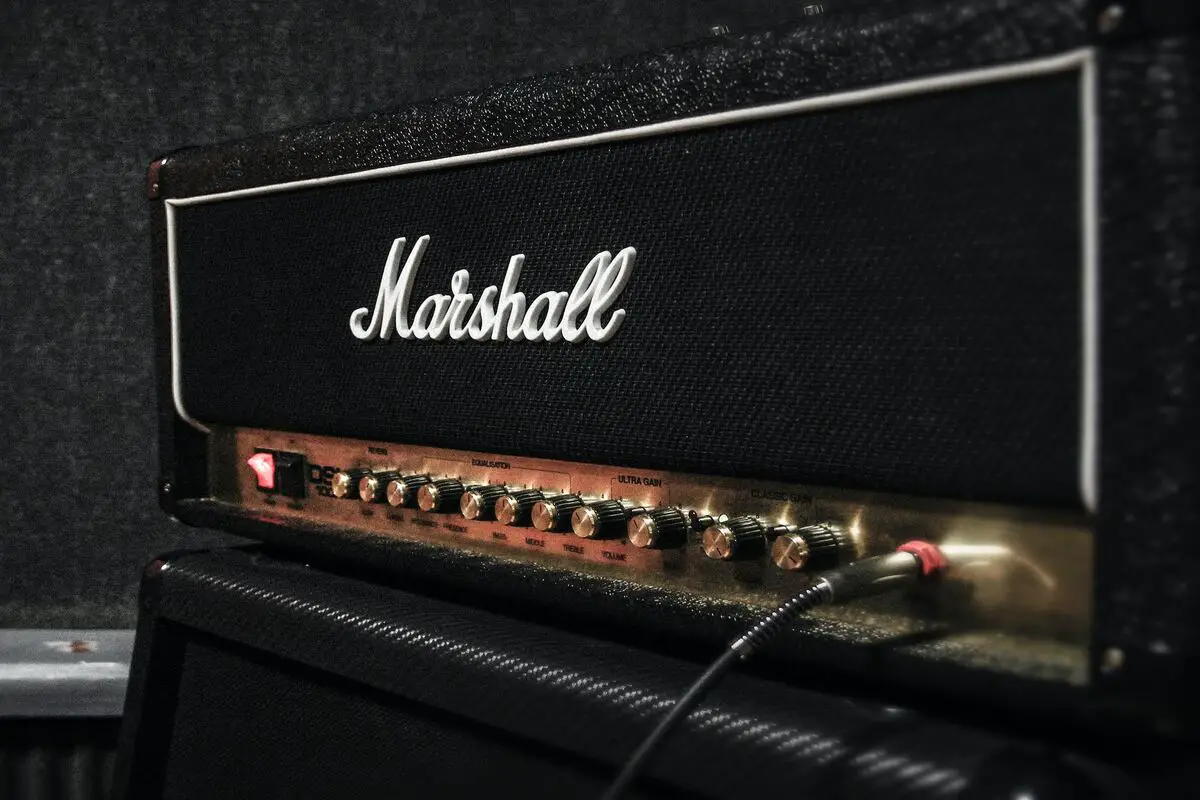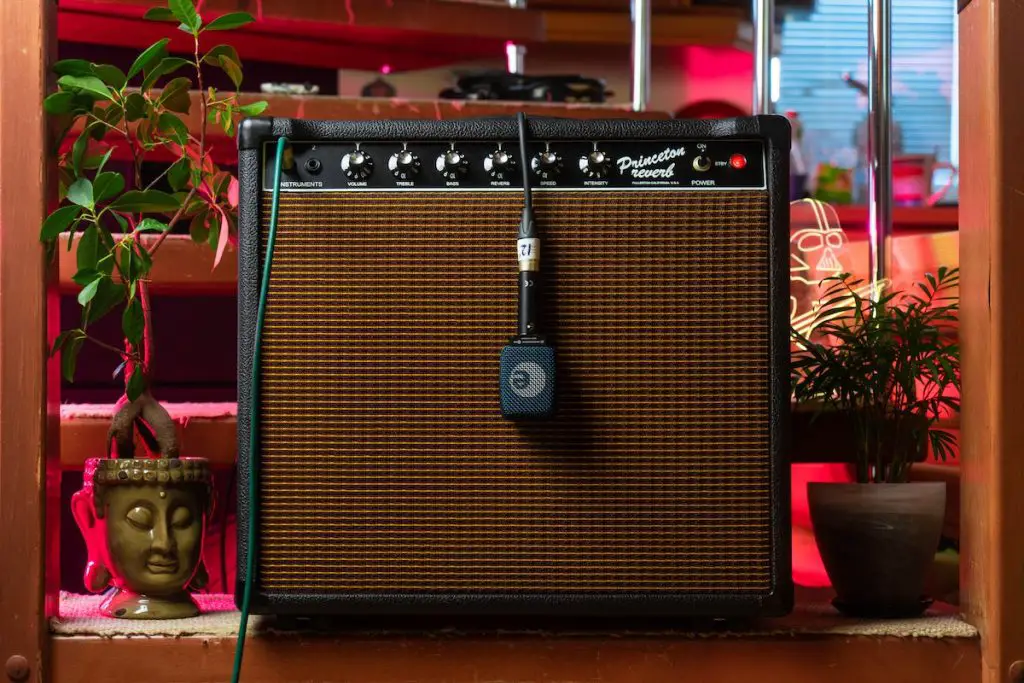As a guitar player, you’ve probably heard the term “effects loop” thrown around in gear discussions, but do you really know what it is and how it can elevate your tone game? If you’re feeling a bit perplexed about effects loops and their benefits, you’re in the right place!
In this beginner’s guide, we’ll cover it all – from the basics of what an effects loop is and how it works to setting it up in your rig and even some creative tips and tricks to make your guitar tones soar to new heights. Are you ready to unleash the true potential of your guitar tone? Let’s dive in!
What is an effects loop? An effects loop is a routing option in guitar amplifiers that allows you to connect effects pedals in between the preamp and power amp sections. It enables you to apply effects to only certain parts of your signal chain, providing greater flexibility and control over your tone.
What is an effects loop?
An effects loop is a circuit found in guitar amplifiers that allows external effects pedals to be inserted into the signal chain of the amplifier, typically after the preamp section but before the power amp section. This allows the player to add various effects, such as delay, chorus, or reverb, to their guitar tone in a more controlled and optimized manner.

The purpose of an effects loop is to allow for more precise control over the placement of effects in the signal chain, as some effects are better suited to be placed before the preamp section (in front of the amp), while others work better when placed after the preamp section (in the effects loop).
Placing effects in the effects loop can also help maintain the integrity of the guitar tone by allowing time-based effects, such as delay or chorus, to be inserted after the preamp section, where the signal is typically cleaner and less affected by distortion.
AKAI Professional MPK Mini MK3

AKAI Professional MPK Mini MK3
Types of effects loops
There are two main types of effects loops commonly used in guitar amplifiers: series and parallel.
1. Series effects loop
In a series effects loop, the entire signal from the amp is sent through the loop and back into the amp after passing through the effects pedals or rack units. This means that the effects are inserted in the signal chain between the preamp and power amp stages of the amplifier, allowing for a more integrated and seamless integration of effects into the overall tone of the amp. Series effects loops are the most popular type of effects loop design.
2. Parallel effects loop
In a parallel effects loop, the signal from the amp is split into two identical signals, with one signal passing through the effects pedals or rack units and the other signal bypassing the effects and remaining clean. The two signals are then blended back together before being sent back into the power amp stage of the amp.
This allows for more control over the blend of the clean and affected signals and can create unique tonal possibilities. Parallel effects loops are less common than series effects loops, but they can offer different creative options for guitarists.
How do effect loops work?
An effects loop typically consists of a send jack and a return jack on the amplifier. A 1/4″ instrument cable is connected from the send jack to the input of the effects device, and another cable is connected from the output of the effects device to the return jack.
This allows the signal to be sent out of the amplifier, through the effects device, and then back into the amplifier at the return jack. The effects device can then process the signal and send it back to the amplifier for further amplification or blending with the original signal.

Do you need an effects loop?
One of the main advantages of using an effects loop is that it allows time-based effects such as reverb, delay, and modulation to be placed in the optimal position in the signal chain after any distortion or overdrive from the preamp, preventing them from being altered by distortion and maintaining their clarity and integrity.
However, it is important to note that not all guitar amplifiers have an effects loop, and not all guitarists may find it necessary for their playing style or tone preferences. Some guitarists may prefer to run their effects pedals in front of the amp, directly into the input, and achieve the desired sound without using an effects loop.
Ultimately, the decision to use an effects loop depends on the specific needs and preferences of the guitarist. If you use time-based effects pedals and want to maintain their clarity in your signal chain, an effects loop can be beneficial. However, if you are satisfied with your current setup and achieve the desired sound without an effects loop, then it may not be necessary for you
What effects can you put in the loop?
When it comes to using an effects loop in your guitar amplifier, certain types of effects are commonly placed in the loop for optimal performance. Here are some recommendations:
1. Time-based effects
Effects such as delay and reverb almost always sound more natural when placed in an amplifier’s effects loop. This allows them to be positioned after the pre-amp stage but before the power-amp stage, which can result in a more spacious and atmospheric tone.
Tonal foundation effects such as overdrive, distortion, and fuzz are typically placed in front of the amplifier before the effects loop.
2. Modulation effects
Modulation effects such as chorus, tremolo, and phaser are also commonly placed in an amplifier’s effects loop. This allows them to be applied to the signal after any distortion or overdrive, resulting in a more polished and controlled modulation effect.
3. Tonal foundation effects
Tonal foundation effects such as overdrive, distortion, and fuzz are typically placed in front of the amplifier before the effects loop. These effects shape the core tone of your guitar and are often used to add grit and character to your sound. Placing them in front of the amplifier allows them to interact directly with the pre-amp stage, resulting in a more dynamic and responsive tone.
4. Volume effects
Volume-related effects such as volume pedals or tremolo pedal with a volume feature are commonly placed in the loop as well. This allows them to control the overall volume of the signal after the pre-amp stage, which can be useful for swells, fades, and other volume-related effects.
How to use the effects loop
The effects loop is a circuit in an amplifier that allows you to insert external effects pedals or devices into the signal chain of your amp after the preamp stage but before the power amp stage. Here are some general steps on how to use them:
1. Identify the type of effects loop
Identify if the effects loop is series or parallel. Series effects loops are more common and require you to connect your effects pedals in a series using 1/4″ instrument cables. Parallel effects loops, on the other hand, allow you to blend the dry and affected signals together using a mix control.
2. Locate the effects loop jacks
Effects loops are usually located on the back of your amplifier and consist of two jacks – send (output) and return (input). The send jack sends the signal from the preamp to the effects pedals, and the return jack receives the signal from the effects pedals back into the power amp stage of the amp.
3. Connect your effects pedals
Connect your effects pedals or devices using 1/4″ instrument cables. Connect the output of your last effects pedal or the output of your effects processor to the send jack of the effects loop. Then, connect the input of your first effects pedal or the input of your effects processor to the return jack of the effects loop.
4. Adjust the levels
Depending on your amp and effects pedals, you may need to adjust the send and return levels to ensure proper signal flow and levels. Some amps may have a send level control or a switch to adjust the send level, while others may have a master effects level control. Experiment with these controls to find the optimal settings for your setup.
5. Use the effects loop appropriately
Different types of effects pedals may work better in different positions in the signal chain. Generally, time-based effects such as delay and reverb tend to work better in the effects loop as they can sound more natural and not get altered by distortion from the preamp stage. Modulation effects such as chorus, tremolo, and phaser can also work well in the effects loop.
However, tonal foundation effects such as overdrive, distortion, and fuzz pedals tend to sound better when placed in front of the amp before the preamp stage. Volume pedals are typically used in the effects loop to control the overall volume level of the effects signal without affecting the dry signal.
6. Experiment and tweak
Every setup is different, so it’s important to experiment and tweak the settings to find what works best for your specific amp and effects pedals. Try different combinations of effects pedals in the effects loop and in front of the amp to achieve the desired sound.
If you want even more tips and insights, watch this video called “How to Use an Effects Loop” from the Rhett Shull YouTube channel.
Conclusion
That’s it for the effects loop! Did I cover everything you wanted to know? Let me know in the comments section below (I read and reply to every comment). If you’re looking to elevate your tone game, don’t forget to share this article with a fellow guitarist, and check out my full blog for more tips and tricks on mastering the art of effects loops.
Remember, when it comes to crafting your signature sound, every detail counts and an effects loop can be a game-changer. So go ahead and experiment, unleash your creativity, and watch your tone soar to new heights. Until next time, keep riffing, rocking, and making music magic happen.
Key takeaways
This article covered the effects loop. Here are some key takeaways:
- An effects loop is a crucial tool for guitarists that allows for greater control over the placement and routing of effects pedals in their signal chain.
- Effects loops come in two types: series and parallel, each with its own pros and cons, providing different tonal possibilities.
- Effects loops are typically found in guitar amplifiers and some high-end pedals, and they can greatly enhance the versatility and creativity of a guitarist’s tone.
- To effectively use an effects loop, it’s important to understand its purpose, types, and how to properly connect and set up effects pedals in the loop.















